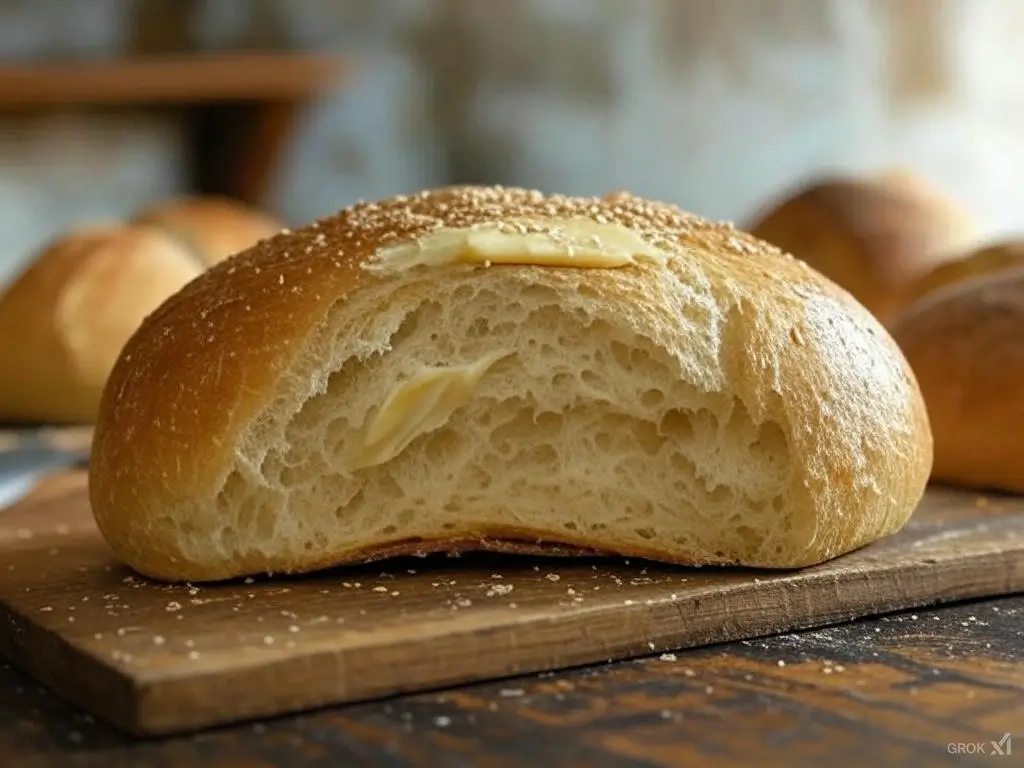Ah, tiramisu! Just hearing the name makes your taste buds dance with anticipation. But why is tiramisu so delicious? This creamy, coffee-infused dessert has captivated hearts and palates worldwide, becoming a staple in both fine dining establishments and home kitchens.
In this article, we’ll dive deep into the rich history, key ingredients, layering techniques, flavour science, and cultural significance of tiramisu. Whether you’re a seasoned chef or an amateur baker, understanding what makes tiramisu irresistible will leave you craving for more and perhaps inspired to whip up your own batch!
So, let’s get started by exploring the fascinating origins of this beloved Italian dessert.
The Rich History and Origins of Tiramisu
A Brief Overview of Tiramisu’s Beginnings
Tiramisu may seem like it’s been around forever, but its story is surprisingly modern. Many believe that tiramisu originated in the Veneto region of Italy during the late 20th century. While there are debates about its exact birthplace, one thing is certain—this dessert quickly became a symbol of Italian culinary excellence.
Where Was Tiramisu Born?
Some historians trace tiramisu back to Treviso, where a restaurant called Le Beccherie claims credit for inventing it in the 1960s. Others argue that similar desserts existed earlier under different names, such as “Zuppa del Duca” (the Duke’s soup). Regardless of its origin, tiramisu embodies the essence of Italian tradition: simple yet refined flavours brought together through skilful preparation.
For a delightful twist on classic desserts, check out our comprehensive Red Velvet Trifle Guide .
How Did Tiramisu Become Popular?
Word of tiramisu spread like wildfire across Italy and eventually made its way to international shores. Its universal appeal lies in its ability to combine familiar ingredients—coffee, mascarpone, eggs, and cocoa—into something extraordinary. Today, tiramisu is celebrated not just as a dessert but as a cultural icon representing Italian heritage.
Why is Tiramisu So Delightful? Exploring Its Historical Roots
The charm of tiramisu isn’t just in its taste—it’s also tied to its storied past. Traditional recipes passed down through generations highlight how Italians have always valued balance and simplicity in their cuisine.
Traditional Recipes and Their Influence on Modern Variations
Classic tiramisu recipes often call for raw eggs, which some people find intimidating. However, these days, many adaptations use pasteurized eggs or even vegan substitutes without compromising the authentic Italian tiramisu recipe. By honouring tradition, while embracing innovation, tiramisu continues to evolve, proving why it remains so popular today.
Its journey from a regional speciality to a global phenomenon answers part of the question: why is tiramisu so delicious? It’s not just about the ingredients; it’s about the love and care poured into every layer.
Why is Tiramisu So Delicious? The Role of Key Ingredients

Coffee – The Heart of Tiramisu’s Flavor Profile
When it comes to why tiramisu is so delicious , coffee plays a starring role. This aromatic brew isn’t just an accompaniment—it’s the backbone of the dessert’s flavour profile. Espresso, in particular, adds depth and richness that complements the creamy mascarpone perfectly.
Choosing the Right Coffee for Your Tiramisu
Not all coffees are created equal. For the best results, opt for freshly brewed espresso or strong coffee. A robust blend works wonders because it enhances the overall taste without overpowering other ingredients. Remember, the strength of your coffee will directly impact how much flavour you get in each bite.
How Coffee Impacts the Overall Taste
The magic happens when coffee-soaked ladyfingers meet the creamy filling. This combination creates a harmonious balance between bitterness and sweetness, making every layer irresistible. Without coffee, tiramisu would lose its signature kick, leaving it bland and unremarkable.
To create visually stunning desserts, explore the best layers for a trifle in our detailed guide: Best Layers for a Trifle .
Mascarpone Cheese – Adding Creaminess and Depth
Mascarpone cheese is another key player in answering why is tiramisu so delicious . Its velvety texture and mild flavour make it the perfect base for the dessert’s rich cream mixture.
What Makes Mascarpone Special?
Unlike other cheeses, mascarpone has a soft, spreadable consistency that blends effortlessly with eggs and sugar. It also brings a subtle tanginess that elevates the dessert’s complexity. If you’re lucky enough to find fresh, homemade mascarpone, your tiramisu recipe will take on a whole new level of luxury.
Alternatives to Mascarpone in Tiramisu
For those who can’t access mascarpone or prefer dairy-free options, there are alternatives like cream cheese or coconut cream. While they won’t replicate the exact taste, they can still deliver a satisfying result. However, nothing beats the authentic Italian experience provided by real mascarpone.
Eggs – Creating Lightness and Structure
Eggs are the unsung heroes of tiramisu. They provide structure and lightness to the cream, ensuring it holds together beautifully while maintaining its airy texture.
Using Whole Eggs vs. Just Yolks or Whites
Traditional recipes typically use whole eggs, but some variations separate them for added fluffiness. Beating the egg whites separately before folding them into the mixture introduces air, resulting in a lighter final product. On the flip side, using only yolks creates a denser, richer cream.
Safety Concerns with Raw Eggs
One common concern about tiramisu is the use of raw eggs. To mitigate risks, consider pasteurized eggs or heating the mixture slightly to kill any potential bacteria. Don’t let this worry stop you from enjoying one of life’s greatest pleasures!
Why is Tiramisu So Irresistible? The Art of Layering

The Importance of Layering Techniques
Layering is where everything comes together in tiramisu. Proper technique ensures even distribution of flavors and textures, making every bite as delightful as the last.
Step-by-Step Guide to Perfect Layers
Start by preparing your coffee-soaked ladyfingers and cream mixture. Spread a thin layer of cream at the bottom of your dish to prevent the cookies from sticking. Then, alternate layers of ladyfingers and cream until you reach the top. Finish with a generous dusting of cocoa powder for that iconic look.
Common Mistakes to Avoid When Layering
Over-soaking the ladyfingers is a rookie mistake. Too much liquid can turn your dessert into mush, ruining its structural integrity. Similarly, uneven layers can lead to an inconsistent eating experience. Patience and precision are key here.
Achieving Balance Between Components
Balancing the components is crucial if you want to understand why tiramisu is so delicious. Each element should complement the others rather than compete for attention.
Tips for Maintaining Texture and Flavor Harmony
To achieve harmony, pay close attention to proportions. Too much coffee might overwhelm the mascarpone, while excessive sugar could mask the delicate flavours. Strike the right balance, and your tiramisu will sing with every mouthful.
By mastering the art of layering, you unlock the true potential of this beloved dessert. With practice, anyone can create a masterpiece worthy of being called classic tiramisu.
Curious about the origins of red velvet? Discover whether red velvet is really just chocolate dyed red in this insightful article: Is Red Velvet Really Just Chocolate Dyed Red?
Why Does Tiramisu Taste So Good? The Science Behind the Flavors
Understanding the Chemistry of Flavor Development
If you’ve ever wondered why tiramisu is so delicious, science holds many of the answers. The interplay of ingredients during preparation creates a symphony of flavours and textures that delight the senses.
Maillard Reaction and Its Role in Baking
The Maillard reaction occurs when proteins and sugars are heated together, producing rich, complex flavours. While tiramisu isn’t baked in the traditional sense, this reaction still plays a role when coffee-soaked ladyfingers interact with the cream. The slight browning of the cookies enhances their aroma and taste, adding another layer of depth to the dessert.
Emulsification and Its Impact on Creaminess
Mascarpone cheese and eggs form an emulsion, blending fat and water molecules to create a smooth, creamy texture. This process ensures that every bite feels luxurious and indulgent. Without proper emulsification, the cream might separate, ruining the overall experience.
Enhancing Tiramisu with Optional Additions
While the basic recipe is undeniably delightful, some enhancements can elevate it further. For example, incorporating chocolate swirls or a splash of liqueur-like Marsala wine adds extra dimensions to the flavour profile.
Incorporating Chocolate Swirls for Extra Flavor
Chocolate pairs beautifully with coffee and mascarpone, making it a natural choice for customization. Whether drizzled on top or swirled through the cream, chocolate brings warmth and richness that complements the dessert’s core elements.
By understanding the science behind tiramisu, we gain insight into what makes it such a beloved treat. Every step—from soaking the ladyfingers to whipping the cream—contributes to its irresistible charm.
Uncover the secrets behind what makes red velvet taste better and elevate your baking skills: What Makes Red Velvet Taste Better .
Why is Tiramisu Universally Loved? Cultural and Personal Connections

Tiramisu as a Symbol of Italian Culinary Excellence
Beyond its taste, tiramisu represents Italian culture and tradition. It embodies the values of simplicity, quality, and passion that define Italian cuisine.
Celebrating Italian Heritage Through Food
Italy has given the world countless culinary treasures, but few desserts capture the imagination quite like tiramisu. Its humble origins and meteoric rise to fame reflect the country’s knack for turning everyday ingredients into extraordinary dishes. By enjoying tiramisu, we honour the artisans who crafted its legacy.
Personal Stories and Emotional Attachments to Tiramisu
Food often carries emotional significance, and tiramisu is no exception. Many people associate it with special occasions, family gatherings, or memorable meals. These connections deepen our appreciation for the dessert.
Sharing Memories Through Desserts
Think about your first bite of tiramisu. Was it at a fancy restaurant or homemade by a loved one? Those moments stay with us, shaping how we perceive certain foods. For some, tiramisu evokes nostalgia; for others, it symbolizes celebration. Either way, it’s clear why this dessert resonates so deeply.
Moreover, the act of sharing tiramisu fosters connection. Whether enjoyed alone or with friends, it invites reflection and joy. That’s part of the reason why is tiramisu so delicious —it’s not just about the taste; it’s about the feelings it inspires.
As we explore the cultural and personal aspects of tiramisu, it becomes evident that its appeal transcends borders. From Italy to kitchens around the globe, tiramisu continues to bring people together, one creamy layer at a time.
Looking for an exotic take on tiramisu? Try our delicious Matcha Tiramisu Recipe that blends traditional flavors with a modern twist.
FAQs About Tiramisu
Can I Make Tiramisu Without Eggs?
Absolutely! While eggs are a traditional component of tiramisu, they can be substituted for various reasons, such as dietary restrictions or safety concerns. To replace eggs, try using silken tofu, aquafaba (chickpea brine), or commercial egg replacers. These alternatives help maintain the cream’s structure and lightness while keeping the dish delicious.
Tips for Egg-Free Tiramisu
When experimenting with substitutes, adjust the proportions carefully to ensure the right consistency. For instance, blending silken tofu with mascarpone creates a smooth base that mimics the original recipe.
Is It Necessary to Use Espresso for Tiramisu?
Not necessarily. Although espresso is the classic choice, strong-brewed coffee works just as well. If you’re short on time or don’t have an espresso machine, instant espresso powder dissolved in hot water is a convenient alternative. The key is achieving a robust flavour that complements the other ingredients.
How Long Should Tiramisu Chill Before Serving?
For optimal results, let tiramisu chill in the refrigerator for at least 4 hours—or overnight if possible. This resting period allows the flavours to meld together and the layers to set properly. Rushing this step might leave the dessert feeling soggy or underwhelming.
What Are Some Non-Alcoholic Substitutes for Liquor in Tiramisu?
If you prefer a non-alcoholic version, substitute liquor with vanilla extract, almond extract, or even fruit juices like orange or raspberry. These options add depth without altering the core taste too much.
Conclusion
Tiramisu’s allure lies in its perfect balance of flavours, textures, and emotions. From the rich history rooted in Italian tradition to the precise techniques used in crafting each layer, every aspect contributes to answering why tiramisu is so delicious. Whether enjoyed at a fine dining establishment or lovingly prepared at home, tiramisu continues to captivate hearts and palates worldwide.
Its charm extends beyond taste it connects us culturally and personally. Each bite tells a story, evoking memories and fostering connections. By understanding the role of key ingredients, mastering layering techniques, and appreciating the science behind its creation, we gain a deeper appreciation for this beloved dessert.
Wondering if hot water ruins matcha's flavor? Get perfect tips to preserve its taste in our guide: Does Hot Water Destroy Matcha? Perfect Tips .






